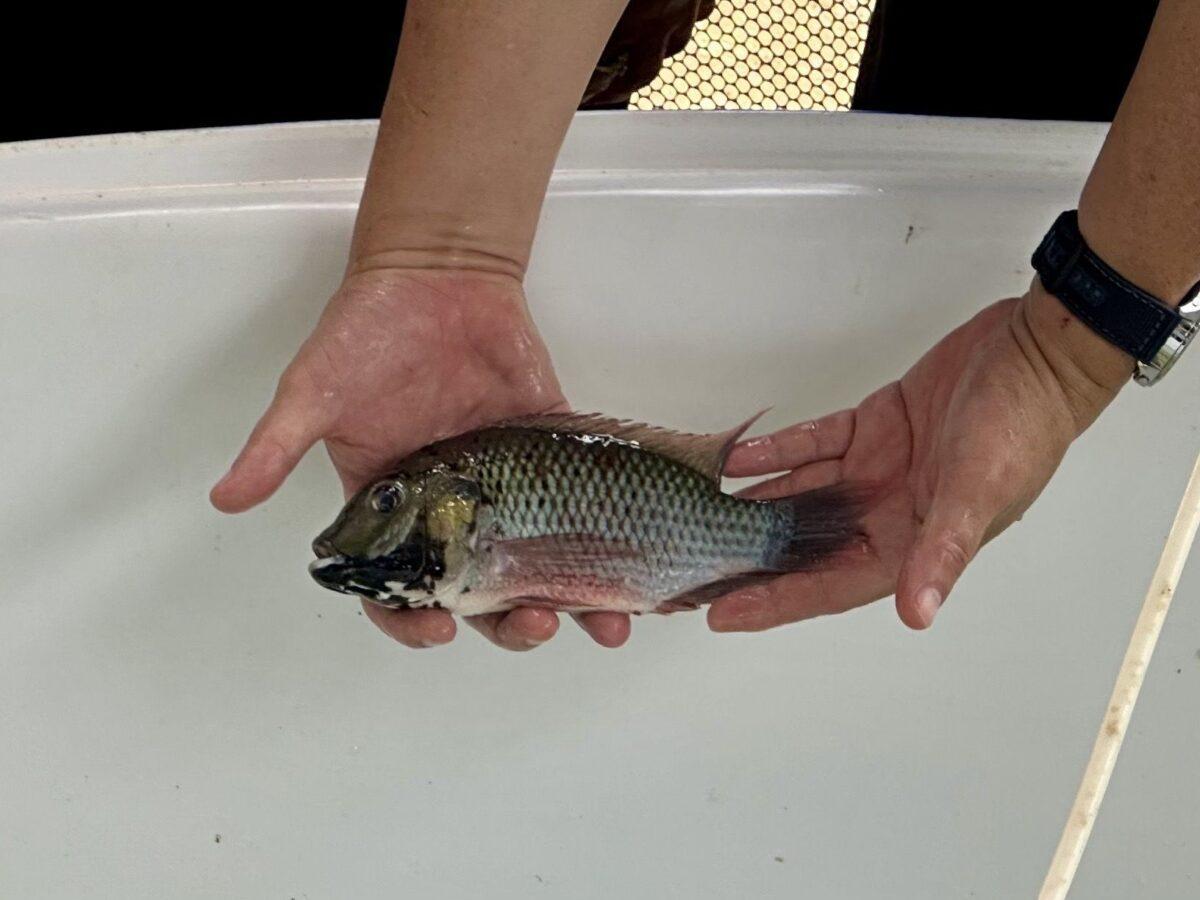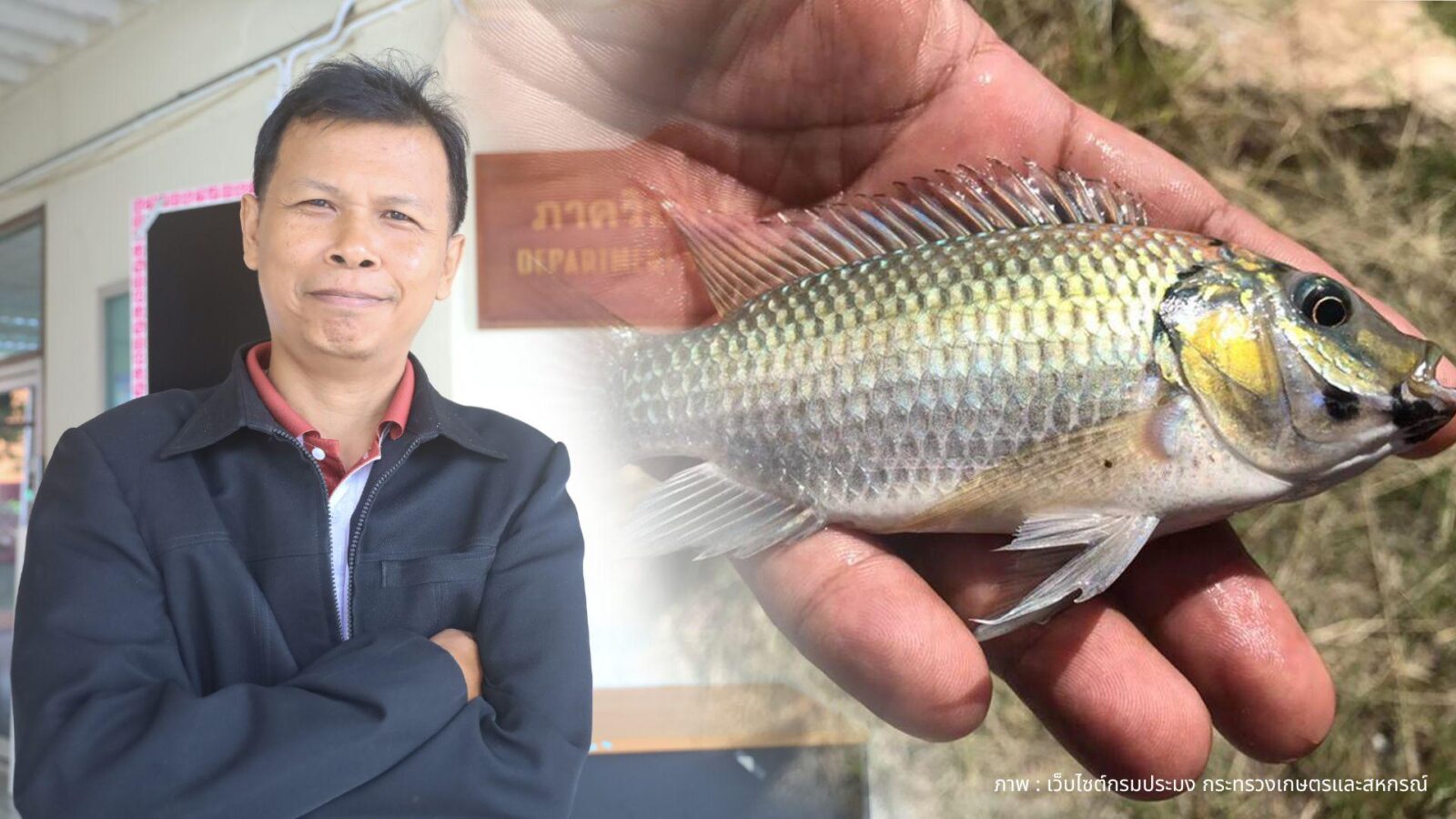“Blackchin Tilapia”has becomes the popular searched words during the past week until many are in doubt what kind of fish it is and where it is form, as well as its benefits or dangers to the environment. On July 16, 2024 – Khon Kaen University has the answer, including solution against the spread of this Alien Species, from Asst. Prof. Pornthep Niampitak, Ph.D., Head the Department of Fishery, Faculty of Agriculture, Khon Kaen University.

Asst. Prof. Pornthep Niampitak, Ph.D., Head the Department of Fishery, Faculty of Agriculture, Khon Kaen University explained that Blackchin tilapia resembles Betta fish and Nil tilapia, only distinguished by its black color on the chin. In general, it is smaller than the counterparts. The origin of this fish is in Africa, and was brought into Thailand several years ago until it spreads. At first, the number was not big and so was not of interest for there is no clear impact on fishery or water animal culture. However, the spread became severe a few years ago. Today, reports said that the fish spread into 13 provinces, in the gulf of Thailand from Rayong to Songkla.
“In general, Blackchin tilapia is found on the coach of Thailand, and in the river and canals. Its quick spreading is due to its ability to live in water with 0-45 PPT, i.e., it can live in both fresh and saline water and its best habitat is brackish water. Another factor is that Blackchin tilapia is a mouthbreeder, with an average of 50-300 or up to 500 roes per time depending on the size. Males take good care of the embryo, resulting in high survival rates, being 90-95% per batch. When the young ones come out of the mouth, they can find food by themselves.”

Asst. Prof. Pornthep added that Blackchin tilapia can be used as people’s food, by turning it to salted fish, fish sauce, fermented fish sauce or used as raw material for animal feeds, powdered fish or prey for meat fish. On the other hand, Blackchin tilapia is very good at finding food and so they eat natural fish food and can kill the fingerlings of other fish. It eats everything, young shrimps, young crabs, fingerlings, making the latter decrease in number while Blackchin tilapia itself multiplies.

Asst. Prof. Pornthep said that chance is a little for Blackchin tilapia to spread to Isan is possible but takes time, due to the topography and the water resource system, which does not connect to the central part. Breeding is viable in rives and canals. In Isan, rivers and canals flow into Mekong, so the spread must be from Mekong. However, the culprit can be human who brings Blackchin tilapia into an area, which we have to take precaution of.
“We all need protein and it is difficult in Isan to farm fish, for the soil does not in general retain water. If the fish reaches Isan, Isan people may enjoy it, just like the apple snails that used to be an alien species before. Now, apple snails have decreased until many started farming them because the snails have become a popular dish of many. However, it is best not to let Blackchin tilapia spread into Isan.”
3 ways to solve Blackchin tilapia’s spreading in natural bodies of water
Asst. Prof. Pornthep suggested “Catch it when you see it” solution to prevent spreading into other water resources. Another approach is to make use of the fish such as consuming it. The government may add motivation by adding the value for more people to catch them.
Finally, we may use fish killers such as sea bass or naked catfish to kill young Blackchin tilapia. However, consideration must be made between the size and the resources environment that facilitates the living of the fish killer. At the same time, the Department of Fishery must conduct research on Blackchin tilapia’s sterilization in order to control its population.
There are a number of Alien Species in Thailand. The important thing is to raise awareness and provide information. The Department of Fishery, Faculty of Agriculture, Khon Kaen University offers programs related to Alien Species in Fishery Law course. This course teaches students which water animal cannot be raised and the measures on Alien Species control. If we can control the fish then it will not enter the natural water resources. The concept is if we do not raise it then we have to destroy it immediately, for it will be difficult to manage if the fish enters the natural water resources.
“Even though the Department emphasizes cash fish instruction, in the future, more contents on Alien Species will be incorporated in the program, for the spread into water resources increases. This will lead to research and innovation creation in the future.”
Pictures: Department of Fishery, Ministry of Agriculture and Cooperatives
News / Photos: Phanit Khatnak

